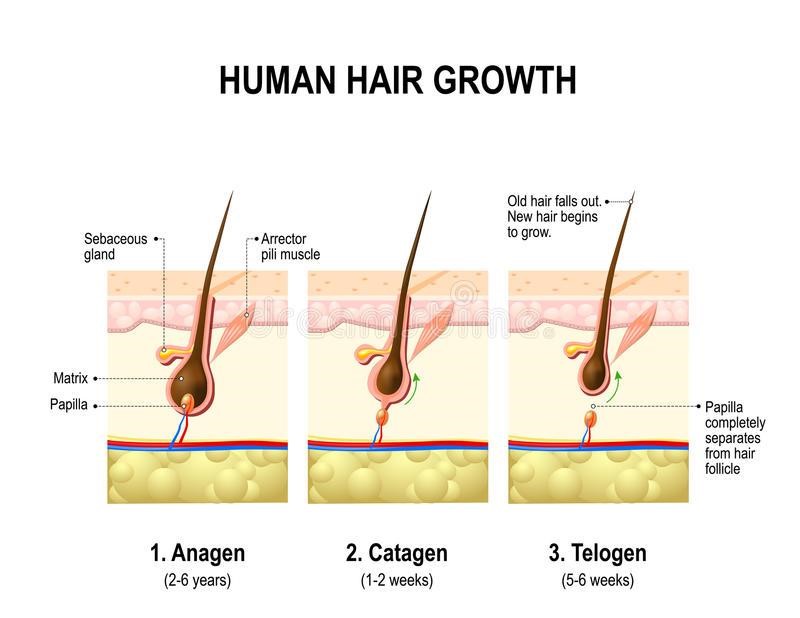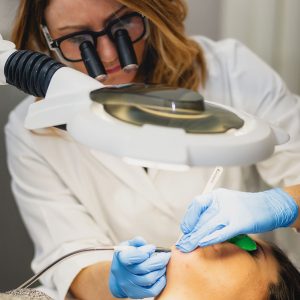So you have some hair that you don’t want? You are not alone! For whatever reason, it has sprung up in some unexpected and unwanted places. Shaving! Plucking! Waxing! They work, but you have to keep doing them over and over. Are there permanent solutions? Oh yes there are! Today, Jasmine Cohen, BA, LME, BCE will discuss one very useful alternative.
Before the time of our birth and all the way throughout our lifetime, our bodies are covered with different types of hair in varying stages of growth. Beginning in the womb, unborn babies are covered in what is called lanugo hair which is the soft, downy hair that begins at about the fifth month of pregnancy and falls out shortly after birth. Those lanugo hairs are then replaced with what is called vellus hair which are the fine ‘peach fuzz’ hairs that help our bodies regulate temperature. Through adolescence and puberty, some of those vellus hairs fall out and turn into accelerated and terminal hairs, which are the coarser and darker hairs you often find growing first in the underarm and pubic regions of the body, but can also be found on the face, chest, back and limbs.
It may sound like a simple concept, but there is a complex process taking place through all this hair growth. From head to toe, birth to death, most of our hair follicles are in a constant state of transition between shedding and regenerating.
In electrology, we are especially concerned with one component of the hair follicle that is of particular importance to the hair growth cycle and that part is the dermal papilla.
The dermal papilla is located at the very base of the hair follicle, in what is called the hair bulb.

You can think of this area as a pocket or bubble at the deepest root of the hair follicle that opens out into the dermal layer of the skin. It contains a system of blood vessels that carry nutrients and oxygen to and from the hair follicle to help nourish the hair.
The nourishment provided by the dermal papilla, and the stem cells that are produced by it, are two of the key factors in stimulating hair growth and it is why electrologists target this area during treatment to prevent further hair growth from occurring.
Yet electrologists can only successfully target this area when the dermal papilla is fully developed and accessible, which happens during a unique phase of the hair cycles’ life. That phase is called anagen or active growth phase. There are three phases of hair growth: Anagen, Catagen and Telogen.


During the anagen phase, when the vascular activity in the dermal papilla is at its peak, hair can grow up to approximately one half inch per month! Notice how full the hair bulb is and the strong vascular connections.

The transitional phase of hair growth is called catagen. During catagen phase, the hair follicle shrinks and the dermal papilla begins to separate from the hair root, as pictured here. Notice how much smaller the hair bulb is.

The resting phase of hair growth is called telogen. During this phase, the dermal papilla is inactive and completely detached from their hair follicle, causing the hair to eventually fall out in a process called shedding.
The hair cycle then repeats as it returns to Anagen phase.
If an electrologist treats a hair in catagen or telogen phase, the hair can still regrow because the dermal papilla is not fully attached to the follicle and the stem cells remain unaffected. Since it is the dermal papilla and the stem cells produced by the dermal papilla that the electrologist is attempting to target, she only wants to treat hair in the anagen phase.
For this reason, when clients come in for electrolysis appointments they are encouraged to shave the treatment area at least 72 hours beforehand. This makes it easier to identify the hairs in anagen “active growth” phase as they would be the only hairs continuing to grow out beyond the surface of the epidermis. This also reduces the likelihood of wasting time on hairs that are less responsive to the treatment (i.e. catagen and telogen hairs) while giving them a chance to cycle back into anagen phase so we can reattempt with a higher success rate in permanently removing those hairs at the next appointment.
An electrolysis consultation begins with a brief explanation of how electrolysis works and what kind of results you can expect including a 15-minute electrolysis treatment that allows you to get acquainted with the modality. With the help of your electrologist you can decide if it is the right course of treatment for your hair removal needs.
If you are interested in scheduling an electrolysis consultation, please contact our front office staff at
(360) 852-8457 or book online!

